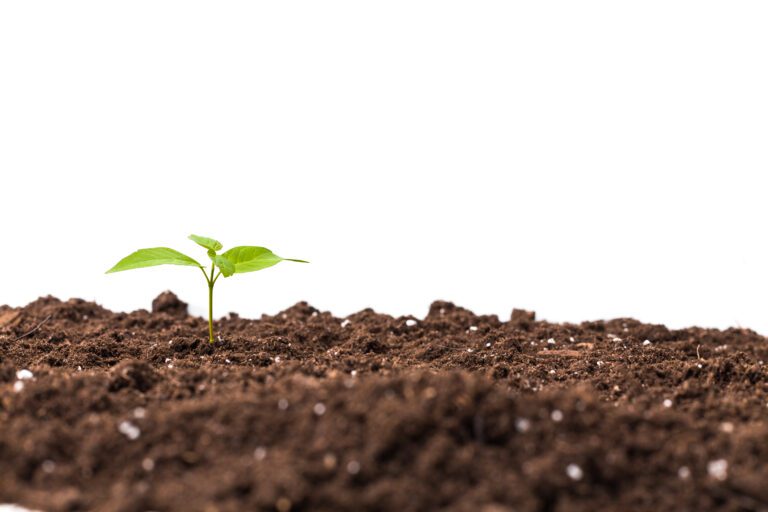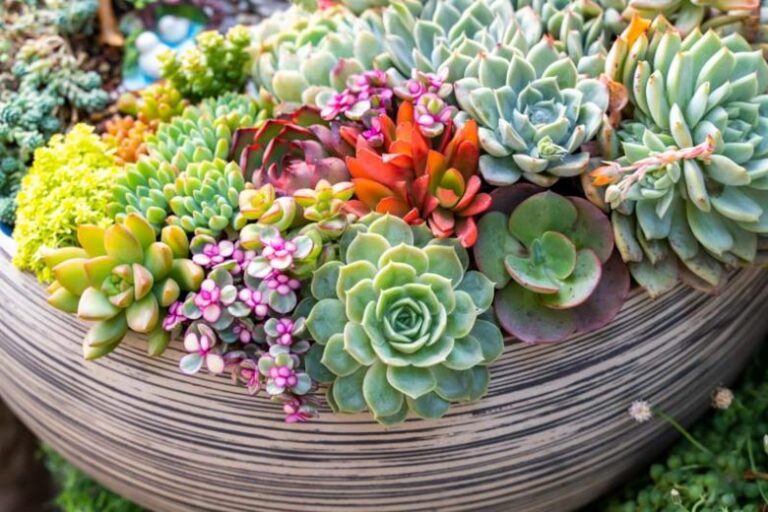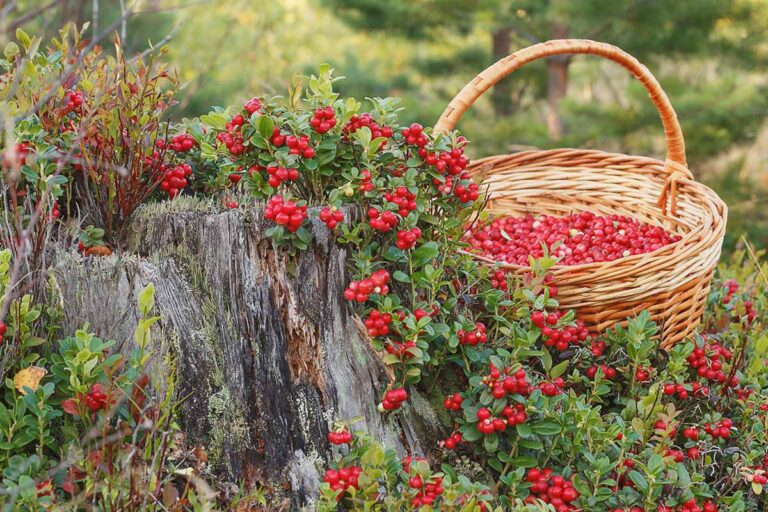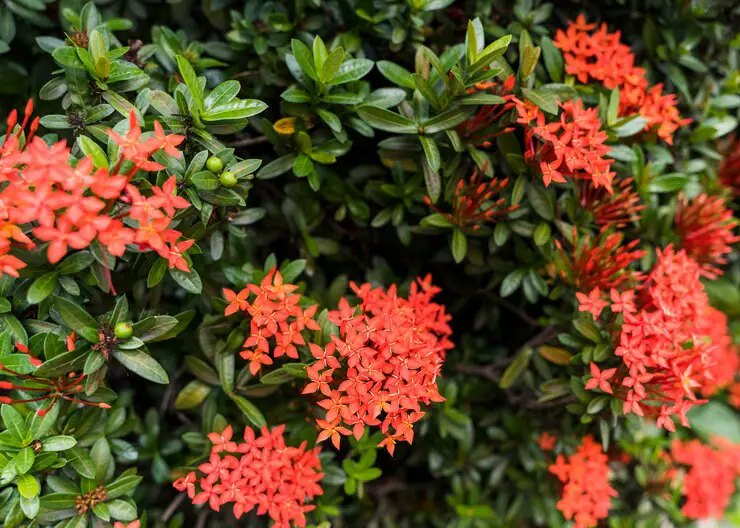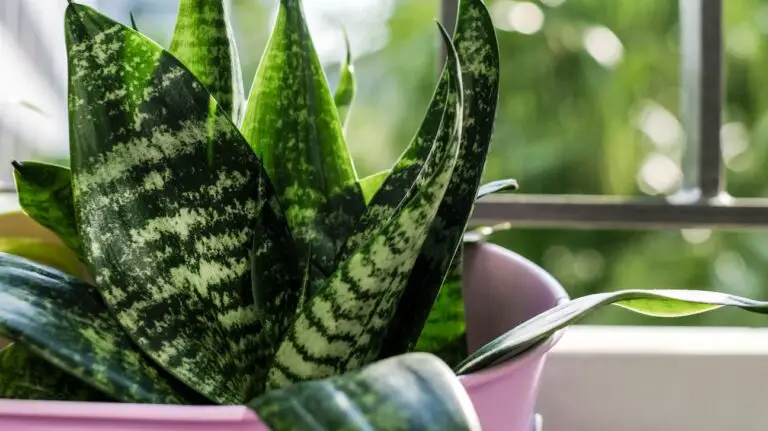Growing Saffron: The World’s Most Expensive Spice
Table of Contents
Benefits of Saffron beyond its Culinary Value
Saffron, with its vibrant hue and delicate aroma, has long been prized for its culinary value. However, this precious spice offers benefits that extend far beyond the realm of cooking. Saffron is a treasure trove of health-promoting properties and has been used in traditional medicine for centuries.
One of the most well-known benefits of saffron is its potential mood-lifting effects. Research suggests that saffron may help alleviate symptoms of depression and anxiety, making it a natural and potentially effective alternative to pharmaceuticals. Additionally, saffron has been linked to improved memory and cognitive function, making it a promising aid for those seeking to enhance their mental clarity and focus.
Moreover, saffron possesses powerful antioxidant properties that can help protect the body against oxidative stress and damage caused by free radicals. These antioxidants have been associated with a reduced risk of chronic diseases, including heart disease, cancer, and neurodegenerative disorders.
Intrigued by these remarkable benefits? Keep reading to explore the many ways in which saffron can enhance your well-being.
Saffron: A Brief History
Saffron, known scientifically as Crocus sativus, has a rich and fascinating history that dates back thousands of years. This vibrant spice derived from the flower of the saffron crocus has been highly prized throughout ancient civilizations for its exquisite flavor, vibrant color, and medicinal properties.
Originating in the Mediterranean region, saffron has been cultivated and used by various cultures, including the ancient Egyptians, Greeks, and Romans. It was highly valued for its culinary and medicinal qualities and was a symbol of wealth and prestige. The Phoenicians were one of the first to trade saffron, spreading its popularity across many regions of the world. Its prominence continued throughout history, with Saharan caravans bringing saffron to distant lands.
Saffron’s history is not just confined to culinary uses. It has also played a significant role in traditional medicine and was highly regarded for its therapeutic properties. Ancient texts and folklore highlight its potential benefits in treating various ailments, including digestive issues, anxiety, and even as an aphrodisiac.
As we delve deeper into the history of saffron, we uncover an intriguing journey that spans centuries and continents, showcasing its enduring allure and relevance in various cultures. Its prominence in ancient civilizations and continued usage today is a testament to its enduring appeal and the captivating stories woven around this precious spice.
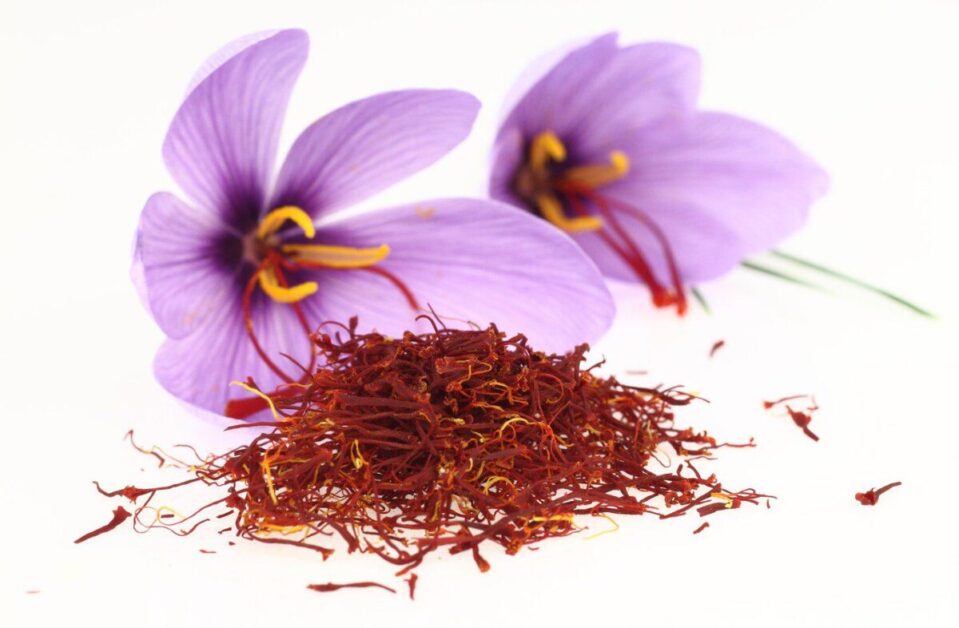
The Process of Cultivating Saffron
Cultivating saffron is a labor-intensive process that requires careful planning and diligent care. The first step in the cultivation process is selecting the right saffron bulbs for planting. It is crucial to choose bulbs that are healthy and disease-free, as this will greatly impact the success of the crop. Bulbs should be sourced from reputable suppliers who can guarantee their quality.
Once the bulbs have been selected, the next step is to prepare the soil for saffron cultivation. Saffron prefers well-drained soil with a pH level between 6 and 8. It is recommended to conduct a soil test to determine the specific soil needs and make necessary amendments accordingly. The soil should be thoroughly tilled and any weeds or debris removed to provide an optimal growing environment for the saffron bulbs.
When it comes to planting and caring for saffron bulbs, timing is crucial. Bulbs should be planted in the late summer or early fall, so they have ample time to establish their root systems before winter. It is important to plant the bulbs at the correct depth – typically around 10-15 centimeters – and ensure they are spaced apart to allow for proper growth. Regular watering and adequate sunlight are essential for the development of healthy saffron plants.
The cultivation process of saffron is fascinating and requires expertise and attention to detail. From selecting the right bulbs to preparing the soil and planting, every step plays a crucial role in ensuring a successful saffron harvest. In the upcoming sections, we will explore the different stages of a saffron crocus plant’s lifecycle and delve into the delicate process of harvesting saffron. Stay tuned to learn more about the world of saffron cultivation and its rich history and benefits.
Ideal Climate and Soil Conditions for Saffron Cultivation
Saffron, the precious spice known for its vibrant color and distinct flavor, requires specific climate and soil conditions to thrive. Optimal saffron cultivation relies on a Mediterranean climate, characterized by warm summers and mild, wet winters. The saffron crocus (Crocus sativus) flourishes in regions with a long, dry summer and a short, wet winter, as these conditions mimic its native habitat in the Middle East.
In terms of soil, saffron prefers well-drained, sandy or loamy soils with a pH range of 6 to 8. Moisture retention is crucial, as the bulbs need sufficient hydration during their dormant period. However, excessive waterlogged conditions can be detrimental to saffron bulbs, leading to rot and fungal issues. Therefore, it is essential to strike a balance between moisture retention and proper drainage. Soil enrichment with organic matter and the addition of well-rotted compost or manure can improve the structure, fertility, and water-holding capacity of the soil, creating an ideal environment for saffron cultivation.
To achieve successful saffron cultivation, aspiring growers should carefully assess their climate and soil conditions, ensuring they meet the recommended criteria. By providing the optimal environment for the saffron crocus, gardeners can maximize yields and quality, ultimately reaping the rewards of their labor. In the following sections, we will delve deeper into key considerations, such as selecting the right saffron bulbs for planting, preparing the soil, and nurturing the plants throughout their lifecycle. Stay tuned for expert insights and practical tips to help you embark on your saffron cultivation journey.

Selecting the Right Saffron Bulbs for Planting
Selecting the right saffron bulbs is crucial for a successful cultivation process. When it comes to planting saffron, it is essential to choose bulbs that are healthy and of high quality. Opting for inferior bulbs can lead to poor yields, wasted time, and effort.
One important factor to consider when selecting saffron bulbs is their size. Generally, larger bulbs tend to produce more flowers and thus yield a higher quantity of saffron threads. However, it’s crucial to strike a balance, as excessively large bulbs may lead to overcrowded planting and result in reduced flower production. Therefore, it is advisable to opt for bulbs that are medium-sized and have a plump, firm appearance.
Another aspect to consider is the freshness of the bulbs. Saffron bulbs are perishable, and their viability decreases over time. Therefore, it is recommended to obtain bulbs that are no more than a year old. Fresh bulbs have a higher chance of successful germination and subsequent growth. To ensure the freshness, purchasing bulbs from reputable suppliers or nurseries is advisable.
Remember, investing in high-quality saffron bulbs is a fundamental step to set a strong foundation for a successful saffron cultivation venture.
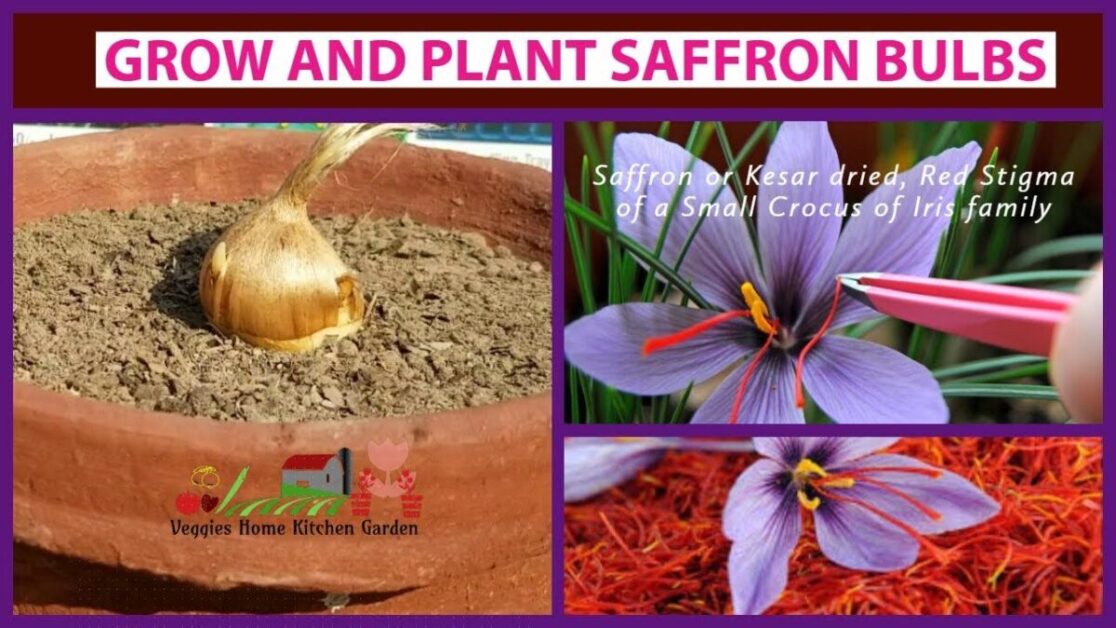
Preparing the Soil for Saffron Cultivation
Preparing the soil is a crucial step in cultivating saffron, as it sets the foundation for a successful growth cycle. The first thing to consider is the soil type, which should ideally be well-draining and rich in organic matter. Saffron thrives in soils with a pH level between 6 and 8, so it’s important to test the soil’s acidity before planting.
To ensure optimal soil conditions, it’s recommended to amend the soil with compost or well-rotted manure. This not only improves soil fertility but also enhances its ability to retain moisture. Additionally, adding minerals such as phosphorus and potassium can promote healthy plant growth and blooming.
Another important consideration is weed control. Weeds can compete with saffron plants for nutrients and resources, so it’s essential to remove any existing weeds and prevent their regrowth. Mulching can be an effective way to suppress weed growth and conserve soil moisture. Organic mulches like straw or wood chips can be spread around the saffron bulbs to create a weed-free environment.
By taking the time to properly prepare the soil for saffron cultivation, garden enthusiasts can set the stage for a thriving saffron crop. The right soil conditions not only support the growth and development of saffron plants but also contribute to the overall quality and yield of the prized saffron threads.
Planting and Caring for Saffron Bulbs
When it comes to planting and caring for saffron bulbs, there are several important steps to follow to ensure successful growth. First and foremost, it is crucial to select the right bulbs for planting. Look for healthy, plump bulbs with no signs of disease or damage. This will give you the best chance of a thriving saffron crop.
Once you have your bulbs, it’s time to prepare the soil. Saffron prefers well-draining soil that is rich in organic matter. Ensure that the soil pH is between 6 and 8, as saffron thrives in slightly acidic to alkaline conditions. Incorporate organic compost or well-rotted manure into the soil to improve its fertility and structure.
Next, plant the bulbs at a depth of about 3 to 5 centimeters, with the pointed ends facing upwards. Space them about 10 to 15 centimeters apart to allow for proper growth and access to nutrients. After planting, water the bulbs thoroughly to ensure good hydration and promote root development.
As the saffron crocus plants begin to grow, it is important to provide them with adequate care. Regularly monitor soil moisture levels and water the plants as needed, ensuring that the soil does not become waterlogged. Saffron plants should also be protected from extreme weather conditions, such as excessive heat or cold, as they can negatively impact growth and development.
By following these steps and providing proper care, you can set the stage for a successful saffron cultivation experience. With time and attention, you will soon be rewarded with the vibrant blooms and valuable saffron threads that this precious spice is known for.
The Lifecycle of a Saffron Crocus Plant
Once planted, the saffron crocus bulb begins its fascinating journey through a cycle of growth and dormancy. Understanding the lifecycle of this valuable plant is crucial for successful cultivation.
In late summer or early autumn, the saffron crocus bulb awakens from its dormant state and begins sprouting new leaves. These slender leaves emerge from the soil, reaching about 10-15 centimeters in height. As the foliage develops, the plant collects and stores nutrients, preparing for the bloom that lies ahead. During this stage, it is essential to provide the saffron crocus with adequate sunlight and well-drained soil to promote healthy growth.
As winter approaches, the saffron crocus enters a dormant period. The leaves wither away, and the bulb retreats underground, conserving energy for the upcoming flowering season. This period of rest is crucial for the plant’s survival and sets the stage for the vibrant blooms that will emerge in the following spring. To ensure proper dormancy, it is important to protect the saffron crocus from excessive moisture and frost during this time.
Stay tuned as we explore the next stage of the saffron crocus’s lifecycle, where the plant bursts into a mesmerizing array of purple petals in a breathtaking display of nature’s beauty.
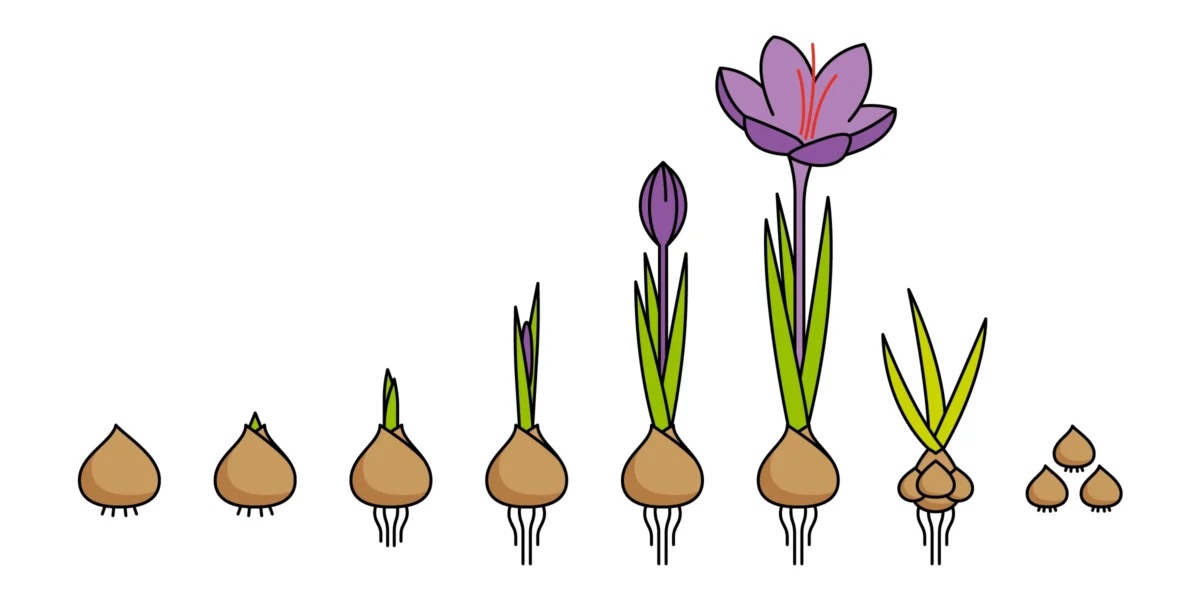
Harvesting Saffron: The Delicate Process
Harvesting saffron is a delicate and meticulous process that requires careful attention and precision. When it comes time to harvest the saffron crocus, each flower must be carefully plucked by hand to ensure the integrity of the delicate red stigmas, which are the prized saffron threads. The process of harvesting saffron can be time-consuming, as each flower only produces a few threads, but the reward is well worth the effort.
Timing is crucial when it comes to harvesting saffron. The flowers must be picked at just the right moment when the blooms are fully open but before they begin to wilt. This window of opportunity can be brief, sometimes lasting only a few days, so the saffron farmers must be vigilant in monitoring the development of the flowers. The flowers are typically harvested early in the morning when the air is cool and the blossoms are at their freshest. This ensures that the saffron threads retain their vibrant color, distinct aroma, and maximum flavor.
Drying and Storing Saffron for Optimal Flavor and Shelf Life
Once the saffron threads have been harvested, it is crucial to handle them with care to ensure optimal flavor and maximum shelf life. Drying saffron is a delicate process that requires attention to detail. The saffron threads need to be spread out in a thin layer on a clean and dry surface, such as a paper towel or a mesh tray. It is important to avoid stacking or overlapping the threads, as this can trap moisture and lead to uneven drying.
The ideal conditions for drying saffron involve low humidity and good air circulation. A well-ventilated room with moderate temperature is recommended. Direct sunlight should be avoided to prevent the breakdown of the saffron’s delicate chemical compounds. Depending on the environmental conditions and the moisture content in the threads, it may take anywhere from a few days to a couple of weeks for the saffron to completely dry. Regular monitoring is essential during the drying process to ensure that the threads do not become over-dried or moldy.
Certainly! Here’s a table with tips for drying and storing saffron to maintain its optimal flavor and shelf life:
| Step | Description |
|---|---|
| 1. Dry the Saffron | If you’ve purchased fresh saffron threads, start by drying them out. Place the saffron threads between paper towels and leave them in a warm, dry location for about a week. Afterward, transfer the dried threads to a container. |
| 2. Use the Right Container | Store saffron in an airtight container to shield it from circulating air. Opt for the smallest container possible to minimize air contact. As you use saffron, transfer the remaining threads to an even smaller container to limit air exposure. |
| 3. Keep Saffron Away from Light | Saffron is extremely sensitive to light. Exposure to too much light can cause both color and flavor loss. Use a container that blocks light or wrap the saffron in foil before placing it in the container. |
| 4. Choose the Right Cupboard | Consider the nature of your container. If it blocks light, place it on a spice rack. If it’s transparent and not wrapped in foil, store it in an enclosed cupboard away from light. Wooden cupboards are preferable to metal ones. |
| 5. Watch Storage Temperature | Ideally, store saffron at temperatures below 68°F (20°C). Avoid refrigerating it, as refrigeration can lead to moisture absorption when removed from the fridge. |
Remember, proper storage ensures that your saffron stays fresh and flavorful for as long as possible!
Quality Grading of Saffron: Understanding the Different Categories
When it comes to saffron, quality grading is of utmost importance. The different categories of saffron are determined by several factors, including the color, aroma, taste, and overall quality of the threads. The grading process plays a crucial role in ensuring that consumers can make informed decisions and obtain saffron of the highest quality for their culinary and medicinal needs.
Saffron is commonly graded into three categories: Mongra, Lacha, and Kashmiri. Mongra saffron is considered the highest quality, with long, thick, and dark red threads that have a powerful aroma and intense flavor. Lacha saffron, on the other hand, consists of slightly shorter and lighter threads, but it still maintains a good aromatic profile. Lastly, Kashmiri saffron, which is often lower in price, has shorter threads and a milder aroma and taste, making it suitable for dishes that require a more subtle saffron flavor.
The grading of saffron is determined by multiple factors and the process is meticulous. Color intensity, measured using a spectrophotometer, is a key aspect of grading, with higher levels of crocin, the pigment responsible for the distinctive red color, indicating a superior grade. The levels of safranal, which contributes to the saffron’s aroma, and picrocrocin, which provides the characteristic taste, are also analyzed during the grading process. Additionally, other parameters such as moisture content and foreign matter are taken into consideration to ensure the quality and purity of the saffron.
Saffron as a Medicinal Herb: Health Benefits and Traditional Uses
Saffron, derived from the Crocus sativus plant, has been revered for centuries not only for its culinary value but also for its medicinal properties. This powerful herb is rich in beneficial compounds such as crocin, safranal, and picrocrocin, which contribute to its numerous health benefits.
One of the most well-known traditional uses of saffron is its potential as an antidepressant. Research has shown that saffron may be effective in reducing symptoms of depression, thanks to its ability to modulate neurotransmitters in the brain. Studies have demonstrated that saffron supplementation can lead to improvements in mood and a reduction in depressive symptoms, making it a promising natural option for those seeking an alternative to conventional antidepressant medications.
Furthermore, saffron has been shown to possess anti-inflammatory properties, which may have a positive impact on various health conditions. Inflammation is a common underlying factor in many chronic diseases, including cardiovascular diseases, diabetes, and cancer. Saffron’s anti-inflammatory effects can help alleviate inflammation in the body, potentially reducing the risk of developing these conditions and promoting overall wellness.
These are just a few examples of the health benefits that saffron offers. As further research is conducted, more potential uses of saffron as a medicinal herb continue to be discovered, solidifying its reputation as a valuable tool in promoting health and well-being.
Certainly! Here’s a table highlighting the health benefits and traditional uses of saffron:
| Benefit/Use | Description |
|---|---|
| 1. Antioxidant Boost | Saffron contains antioxidants such as crocin, crocetin, safranal, and kaempferol. These compounds protect cells against oxidative stress and inflammation. Crocin and crocetin may also aid weight loss and reduce appetite. Safranal contributes to mood improvement and brain cell protection. Kaempferol has anti-inflammatory and anticancer properties. |
| 2. Mood Enhancement and Depression Treatment | Saffron is nicknamed the “sunshine spice” due to its mood-enhancing properties. Studies show that saffron supplements effectively treat mild-to-moderate depression, with fewer side effects than conventional medications. |
| 3. PMS Relief | Saffron may alleviate symptoms of premenstrual syndrome (PMS), including pelvic pain and acne breakouts. |
| 4. Weight Loss Aid | Saffron’s appetite-reducing properties may aid weight loss efforts. |
| 5. Seizure Treatment | Although more research is needed, saffron shows promise in managing seizures. |
| 6. Erectile Dysfunction Remedy | Saffron has been traditionally used as an aphrodisiac and may benefit men with erectile dysfunction. |
| 7. Alzheimer’s Disease Treatment | Preliminary studies suggest that saffron may improve cognitive function and memory in Alzheimer’s patients. |
Remember, while saffron offers potential health benefits, it’s essential to consult a healthcare professional before using it for specific conditions.
Saffron in Cosmetics: Skincare and Beauty Applications
Saffron, known for its vibrant hue and unique flavor, has also found its way into the world of cosmetics. With its numerous skincare and beauty applications, saffron has become a sought-after ingredient in the beauty industry.
One of the key benefits of using saffron in skincare is its antioxidant properties. Saffron contains a compound called crocin, which has been found to have antioxidant effects on the skin. This means that it helps protect the skin from free radical damage, which can lead to premature aging and skin damage.
Furthermore, saffron has been found to have anti-inflammatory properties, making it suitable for those with sensitive or acne-prone skin. It can help calm and soothe the skin, reducing redness and inflammation.
In addition to its antioxidant and anti-inflammatory properties, saffron also has skin brightening properties. It can help lighten dark spots and pigmentation, giving the skin a more radiant and even-toned appearance.
With these impressive benefits, it’s no wonder that saffron has become a popular ingredient in various skincare products, including creams, serums, and masks. Whether you’re looking to improve your skin’s overall appearance or target specific skin concerns, incorporating saffron into your skincare routine may be worth considering.
Saffron in Traditional Cuisine: Iconic Dishes from Around the World
Saffron, with its vibrant color, distinct flavor, and unique aroma, has been an integral part of traditional cuisine in many cultures around the world. Its use in iconic dishes can be traced back centuries, and its popularity remains steadfast to this day. From the rich and aromatic paella of Spain to the delicate and flavorful biryani of India, saffron adds a touch of luxury and sophistication to a wide array of traditional recipes.
One such dish that showcases the versatility of saffron is the Italian classic, risotto Milanese. This creamy rice dish, with its luscious golden hue, owes its distinct flavor and color to the addition of saffron threads. As they infuse into the simmering broth, the saffron imparts a beautifully subtle flavor and aroma, elevating the dish to new heights. Whether served as a main course or as a side dish, risotto Milanese is a testament to the transformative power of saffron in traditional Italian cuisine.
In Persian cuisine, saffron takes center stage in the aromatic and flavorful rice dish known as tahchin. This delectable dish combines layers of fragrant basmati rice, tender chicken or lamb, and a saffron-infused yogurt mixture. As the tahchin bakes to perfection, the saffron threads release their vibrant color and distinctive flavor, creating a dish that is as visually stunning as it is delicious. With each spoonful of tahchin, one can truly appreciate the unique role that saffron plays in the culinary traditions of Iran.
In conclusion, saffron’s contributions to traditional cuisine are undeniable. Its presence in iconic dishes from around the world adds depth, complexity, and a touch of luxury to these time-honored recipes. As we continue to explore the diverse flavors of different cultures, let us not forget the humble crocus flower and the extraordinary spice it yields – saffron.
Saffron Substitutes: Alternatives for Culinary Uses
Saffron, with its vibrant color, delicate aroma, and unique flavor, is a prized ingredient in many cuisines around the world. However, due to its high cost and limited availability, finding saffron substitutes can be beneficial for culinary enthusiasts who want to incorporate its essence into their dishes without breaking the bank. While saffron itself cannot be replaced entirely, certain alternatives can help achieve a similar flavor profile and visual appeal.
One popular saffron substitute is turmeric, a member of the ginger family that boasts a bright yellow hue. Not only does turmeric provide a similar yellow color to dishes, but it also imparts a mild earthy and slightly bitter taste. In fact, turmeric is often used as a cost-effective alternative in dishes like rice, stews, and curries, especially in regions where saffron is not readily available. Additionally, turmeric is known for its potential health benefits, including its anti-inflammatory and antioxidant properties.
Another alternative to saffron is annatto seeds, which are derived from the achiote tree. These seeds possess a warm and slightly sweet flavor, along with a deep orange-red color. Annatto seeds are commonly used in Latin American and Caribbean cuisines, adding a rich and vibrant hue to dishes such as rice, sauces, and marinades. Additionally, annatto seeds are known for their antioxidant properties and potential health benefits, making them a versatile substitute for saffron in both flavor and visual appeal.
While turmeric and annatto seeds can serve as suitable alternatives to saffron, it is important to note that they may not provide the exact same taste and aroma. The flavor profiles of these substitutes may differ slightly, so it is advisable to adjust the quantities and experiment with different combinations to achieve the desired taste. Ultimately, saffron’s unique characteristics make it difficult to replicate completely, but these substitutes can certainly enhance the culinary experience for those seeking a budget-friendly option without compromising on flavor and appearance.
Saffron Production and Global Market Trends
Saffron production has been steadily increasing in recent years, due to its high demand in both culinary and medicinal applications. The global market for saffron is experiencing significant growth, with a projected compound annual growth rate of 5.1% from 2021 to 2028. This can be attributed to the rising popularity of saffron as a natural ingredient in various cuisines and traditional medicines.
Iran is the largest producer of saffron, accounting for approximately 90% of the global production. Other key saffron-producing countries include India, Spain, Afghanistan, and Greece. The favorable climate and soil conditions in these regions are ideal for saffron cultivation, resulting in high-quality yields.
The increasing awareness about the numerous health benefits of saffron, such as its anti-inflammatory and antioxidant properties, has also contributed to the growing demand. Saffron is known to have positive effects on mental health, digestion, and immune system function. Additionally, saffron is widely used in the culinary world for its distinct flavor, aroma, and vibrant color.
As the saffron industry continues to thrive, it is important for farmers and cultivators to adopt sustainable practices to ensure the long-term viability of saffron production. This includes proper land management, efficient irrigation techniques, and responsible harvesting methods. By implementing these practices, the global saffron market can maintain its growth trajectory and meet the increasing consumer demand.
Table: Top Saffron Producing Countries (2020)
| Countries | Production (kg) |
|—————-|—————–|
| Iran | 400,000 |
| India | 16,500 |
| Spain | 3,500 |
| Afghanistan | 3,000 |
| Greece | 2,500 |
| Other Countries| 1,000 |
For more information watch the below video.
What are some of the benefits of saffron beyond its culinary value?
Saffron has various health benefits, such as improving mood and reducing symptoms of depression, promoting eye health, and acting as an antioxidant.
Can you provide a brief history of saffron?
Saffron has a rich history dating back thousands of years. It is believed to have originated in ancient Persia (modern-day Iran) and has been highly prized for its medicinal and culinary uses throughout history.
What are the ideal climate and soil conditions for saffron cultivation?
Saffron thrives in regions with a Mediterranean climate, characterized by hot, dry summers and cool, wet winters. It requires well-drained soil with a pH level between 6 and 8.
How do you select the right saffron bulbs for planting?
When selecting saffron bulbs, look for large, healthy bulbs with a reddish-brown color. Avoid bulbs that have mold or signs of damage.
What is the process of preparing the soil for saffron cultivation?
Before planting saffron bulbs, the soil needs to be tilled and any weeds or debris removed. It is also important to add organic matter and ensure proper drainage.
How do you care for saffron bulbs after planting?
Saffron bulbs should be watered regularly but not excessively. They should be protected from extreme temperatures and pests. It is also important to remove any weeds that may compete for nutrients.
What is the lifecycle of a saffron crocus plant?
Saffron crocus plants typically produce flowers in the fall. After pollination, the flowers wilt, and the saffron threads, also known as stigmas, are harvested. The plant then enters a dormant period during winter.
How is saffron harvested?
Saffron is harvested by carefully plucking the delicate threads, or stigmas, from the center of the flower. This process is usually done by hand to ensure the quality and integrity of the saffron.
How should saffron be dried and stored?
After harvesting, saffron threads should be dried in a well-ventilated area away from direct sunlight. Once dried, they can be stored in an airtight container in a cool, dark place to maintain their flavor and aroma.
What are the different categories of saffron quality grading?
Saffron is typically graded into different categories based on its color, flavor, and aroma. The highest quality saffron is known as “coupe,” followed by “mancha,” and “pushal.”
What are some health benefits and traditional uses of saffron as a medicinal herb?
Saffron has been used in traditional medicine for its anti-inflammatory, antioxidant, and antidepressant properties. It has been used to treat conditions such as asthma, cough, menstrual disorders, and digestive issues.
How is saffron utilized in cosmetics and skincare?
Saffron is used in various cosmetics and skincare products for its ability to brighten the complexion, reduce dark spots, and improve skin texture. It is often found in face masks, serums, and creams.
What are some iconic dishes from around the world that feature saffron?
Saffron is a key ingredient in many iconic dishes, including Spanish paella, Iranian rice dishes such as “Tahchin,” Indian biryanis, and Italian risottos.
Are there any alternatives to saffron for culinary uses?
While saffron has a unique flavor and aroma, there are some substitutes that can be used in cooking and baking, such as turmeric, safflower, or annatto. However, these substitutes may not provide the exact same taste and color as saffron.
What are the current global market trends for saffron production?
The global market for saffron has been steadily increasing due to growing demand for its culinary and medicinal uses. Countries like Iran, Spain, and India remain the leading producers and exporters of saffron.

Nicole Burke is a dynamic writer at SouthElMonteHydroponics, fueled by her passion for horticulture and environmental sustainability. Armed with a degree in Environmental Science from a renowned institution, Nicole’s expertise lies in hydroponic gardening, organic farming, and biodiversity conservation. Her insatiable curiosity and love for nature drive her to explore innovative techniques in hydroponics, seeking to revolutionize the way we grow crops in urban environments. Nicole’s writing reflects her deep commitment to promoting eco-conscious practices and fostering a deeper connection between humans and the natural world. Through her engaging storytelling, she inspires others to embrace sustainable living and harness the power of hydroponics for a greener future.

